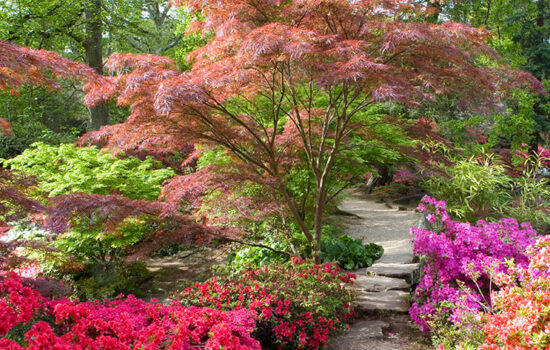The concept of the Orient Garden is a fascinating blend of history culture, and horticulture. Originating from various parts of Asia including China Japan, and Persia, these gardens are not just areas of natural beauty but spaces imbued with philosophical ideas art, and a profound connection to the natural world. In this article, we will explore the essence of the Orient garden diving into its various aspects and understanding why it remains a significant part of oriental and global garden design.
The Philosophy Behind the Orient Garden
At the heart of every Orient garden lies a deep philosophical foundation often reflecting the principles of Taoism Buddhism, and Confucianism. These gardens are designed to be more than just visually pleasing. They are intended to be spaces where one can meditate, reflect, and find peace. The careful arrangement of rocks water features, and plants is not random but is meant to represent natural landscapes in miniature encouraging contemplation of the natural world and our place within it. The garden is a manifestation of harmony between humans and nature where every element has significance and contributes to the overall balance and tranquility of the space.
Architectural Elements
An orient garden is distinguishable by its unique architectural elements, including pagodas, moon gates, stone lanterns, and intricate pathways inviting exploration. These elements are not merely decorative but enhance the garden’s experience guiding visitors through a journey of discovery and introspection. The architecture within an oriented garden is carefully integrated with the natural landscape blurring the lines between artificial and natural, creating a seamless, enchanting, and grounding transition.
Plant Selection and Symbolism
Plants in an Orient garden are chosen not only for their aesthetic appeal but also for their symbolic meanings. Bamboo represents resilience pine denotes longevity, and the lotus symbolizes purity. Each plant, tree, and flower is selected to contribute to the narrative and spiritual essence of the garden. The careful composition of these elements within the garden reflects the cyclic nature of life and the interconnectedness of all living things.
Water Features: The Soul of the Garden
Water plays a pivotal role in the orient garden symbolizing life renewal and energy flow. From gentle streams to tranquil ponds and cascading waterfalls water features are integrated into the garden landscape to create a sense of movement and sound which adds to the sensory experience of the garden. The reflective quality of water also serves to multiply the beauty of the surrounding flora and architectural elements creating a serene atmosphere that encourages mindfulness and relaxation.
The Zen Garden: A Study in Simplicity and Meditation
A particular category within the Orient Garden is the Zen Garden, characterized by its minimalist design and focus on meditation. Originating from Japan, these gardens use sand rocks. And a few carefully selected plants to create abstract representations of natural landscapes. The simplicity of the Zen garden is its strength providing a space for quiet reflection. And meditation away from the complexities of the outside world.
The Role of Bridges and Pathways
In many orient gardens bridges and pathways play a significant role symbolizing the journey through life or the path to enlightenment. These elements are thoughtfully designed to direct the visitor’s attention to different aspects of the garden encouraging exploration and discovery. The journey through the garden becomes a metaphor for the journey through life with each step offering new perspectives and insights.
The Influence of the Orient Garden on Western Horticulture
The orient garden has profoundly influenced Western garden design, introducing balance and harmony concepts and integrating philosophical principles into landscape design. Western gardens have adopted elements such as the use of water and the incorporation of architectural features. And the symbolic use of plants blending them with local traditions and aesthetics to create unique and inspiring spaces.
Conclusion
The garden is more than just a space of beauty. It is a sanctuary where nature, art, and philosophy converge. Through its thoughtful design and symbolism, the Orient Garden offers a retreat from the hectic pace of modern life. Inviting us to reflect meditate, and reconnect with the natural world. Whether through the grandeur of its architecture the simplicity of a Zen garden, or the symbolic use of plants and water the Orient Garden remains a timeless testament to the human desire for harmony beauty, and peace.
FAQs
What is an orient garden?
It refers to a garden style originating from various parts of Asia including China, Japan, and Persia. It embodies harmony and balance. And a deep connection with nature often incorporating philosophical and spiritual elements into its layout.
What common elements do Orient gardens contain?
Common elements include water features like ponds and streams and architectural structures such as pagodas. And bridges carefully selected plants with symbolic meanings, and paths that encourage contemplation and exploration.
What is the purpose of the rocks and sand in a Zen garden, a subtype of the orient garden?
In a Zen garden rocks and sand create minimalist landscapes that promote meditation and reflection. The stones can represent mountains or islands while the raked sand suggests water ripples symbolizing the impermanence of life.
How do water features contribute to the atmosphere of an orient garden?
Water features symbolize life renewal and the flow of energy. The sound and movement of water add a tranquil and dynamic element to the garden. Enhancing the sensory experience and promoting peace and mindfulness.
Can one find orient gardens outside of Asia?
Yes! The principles and aesthetics of the Asian garden have influenced garden designs worldwide. Many Western gardens incorporate elements adapting them to local climates and landscapes while preserving their essence of harmony and contemplation.




